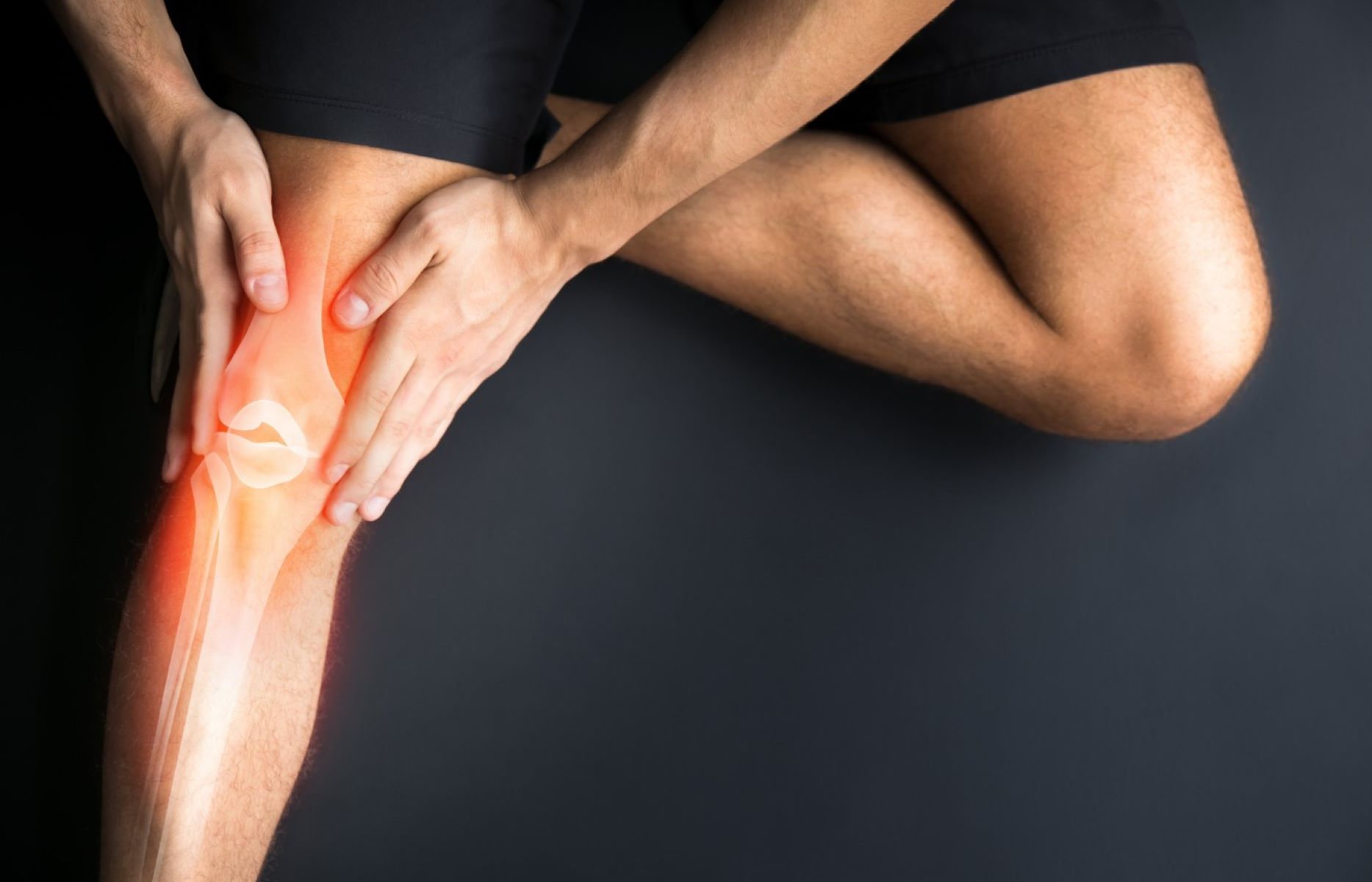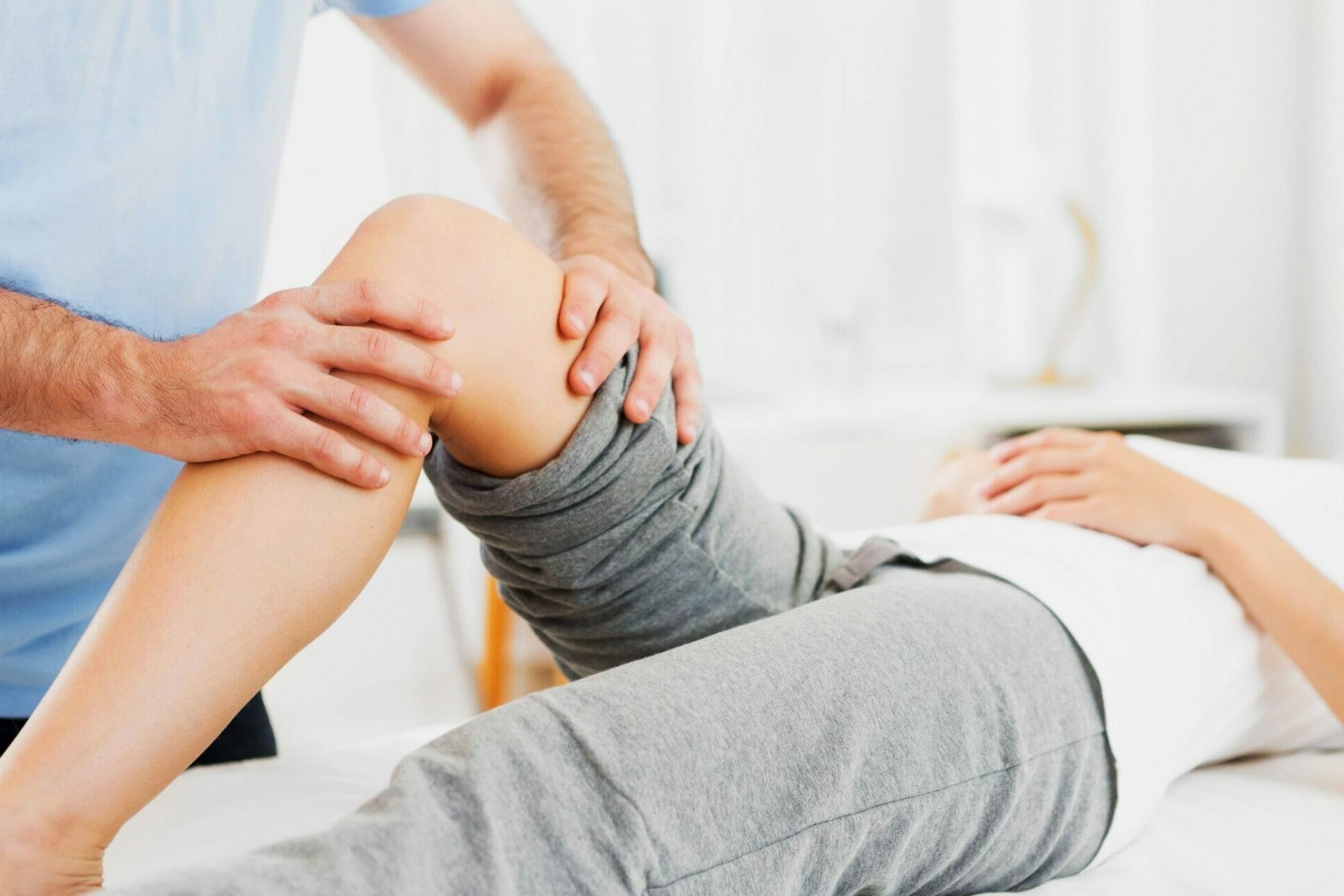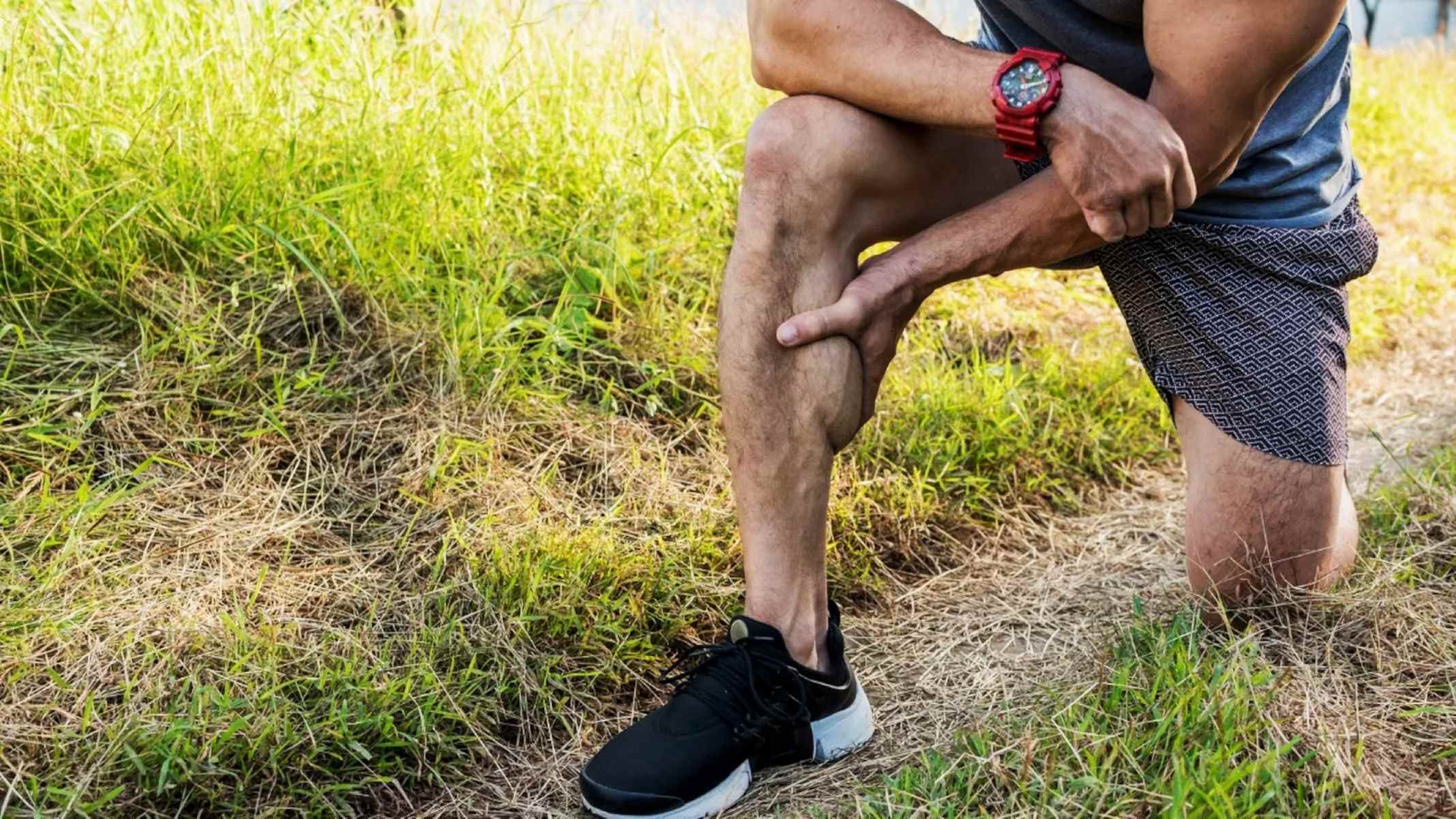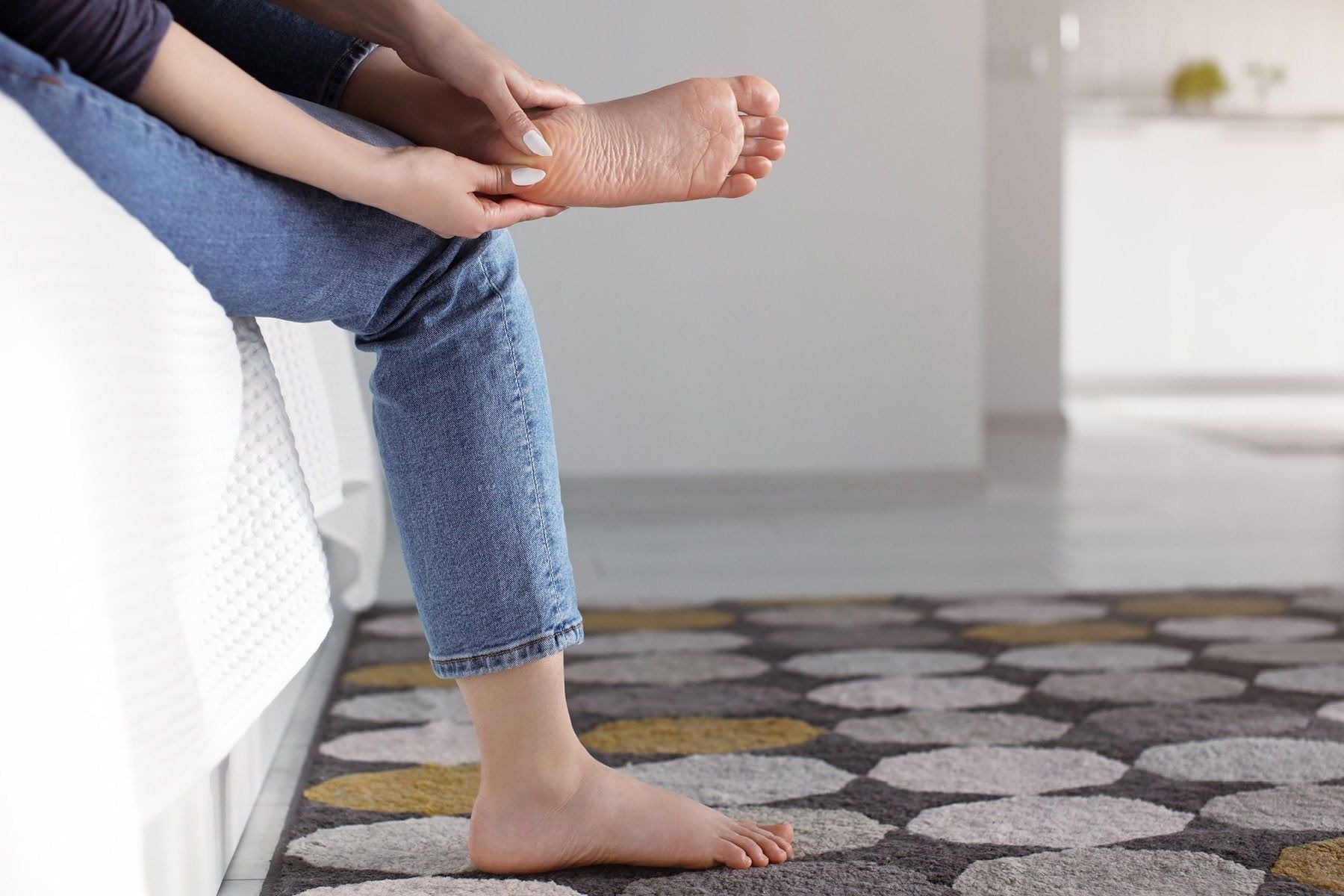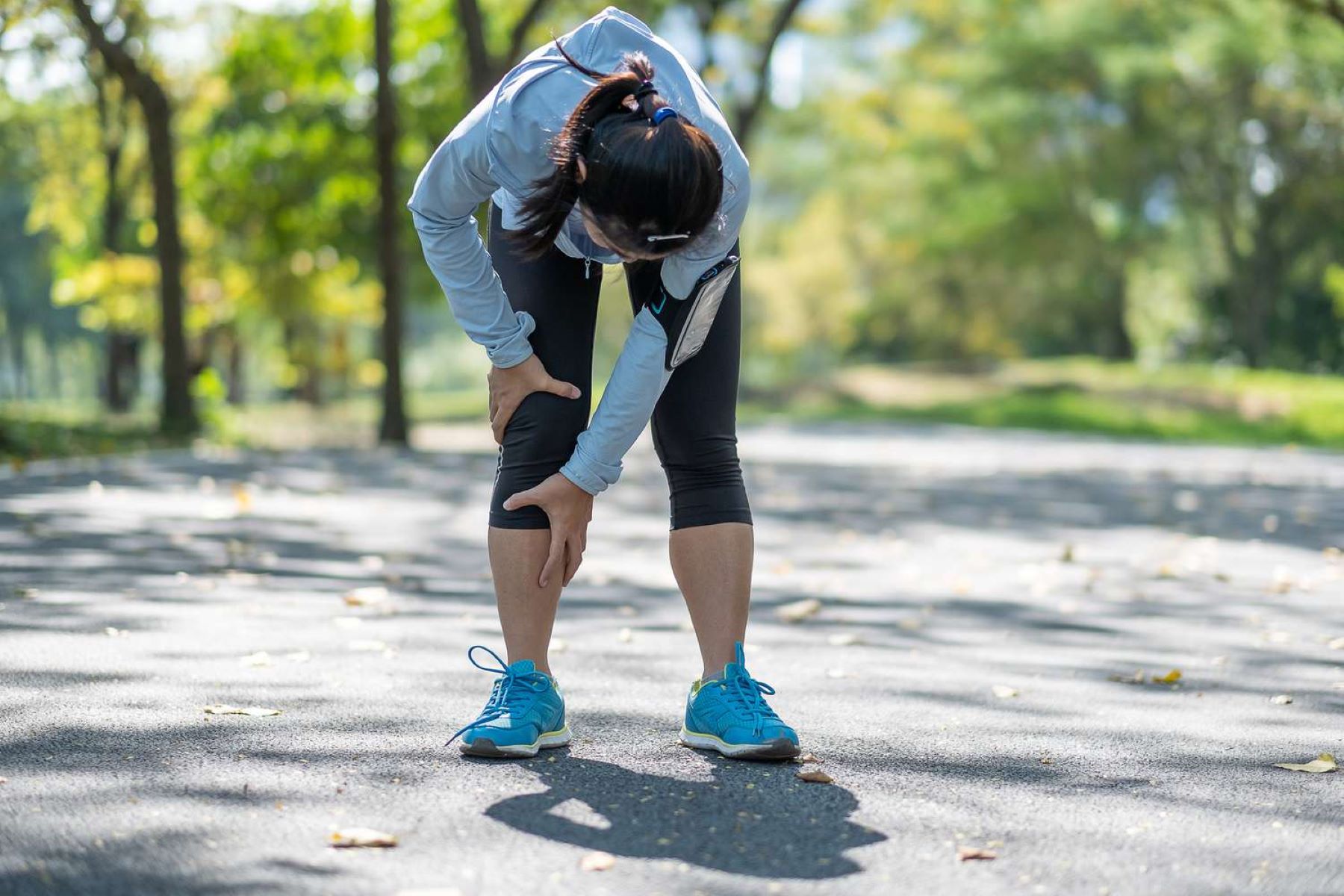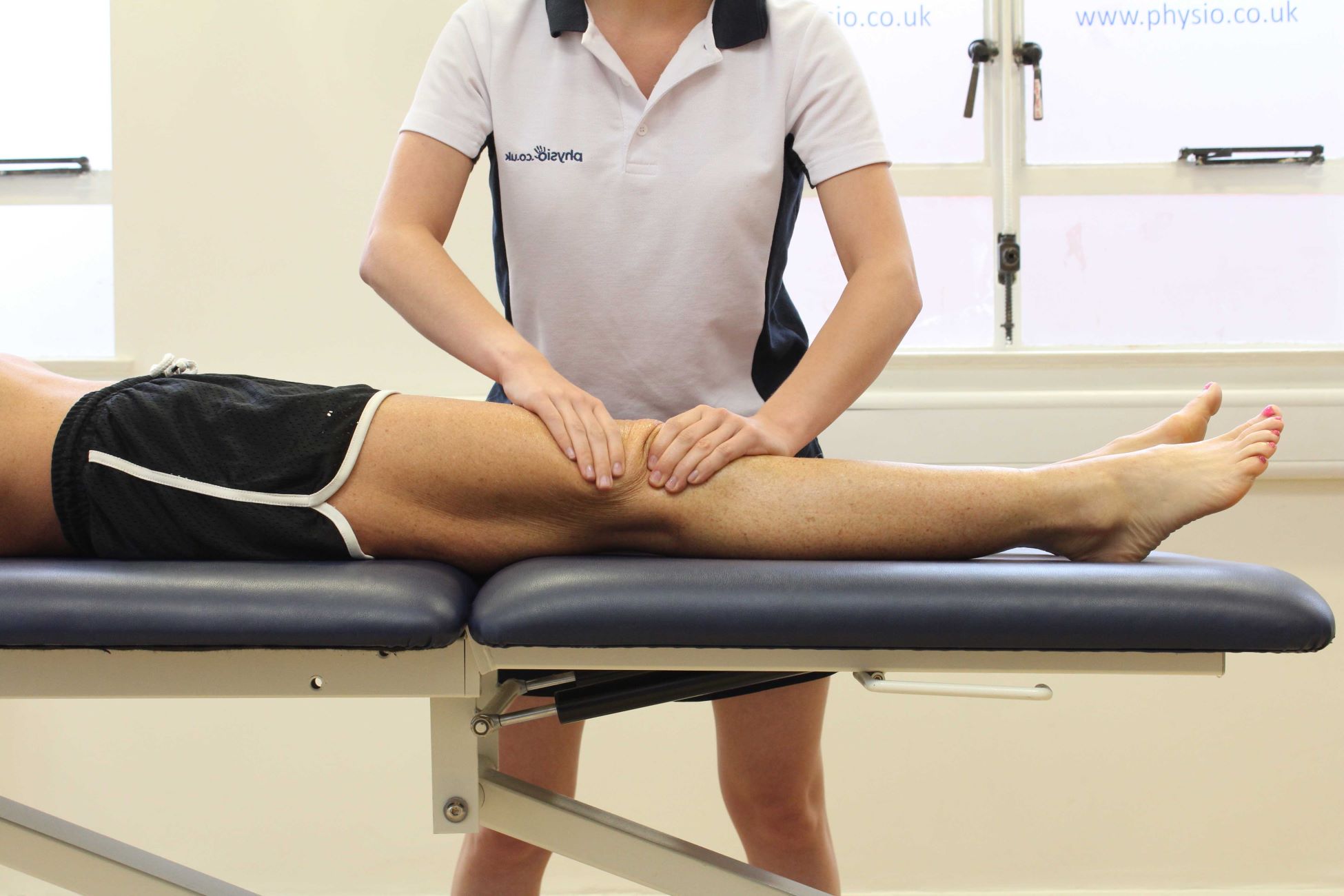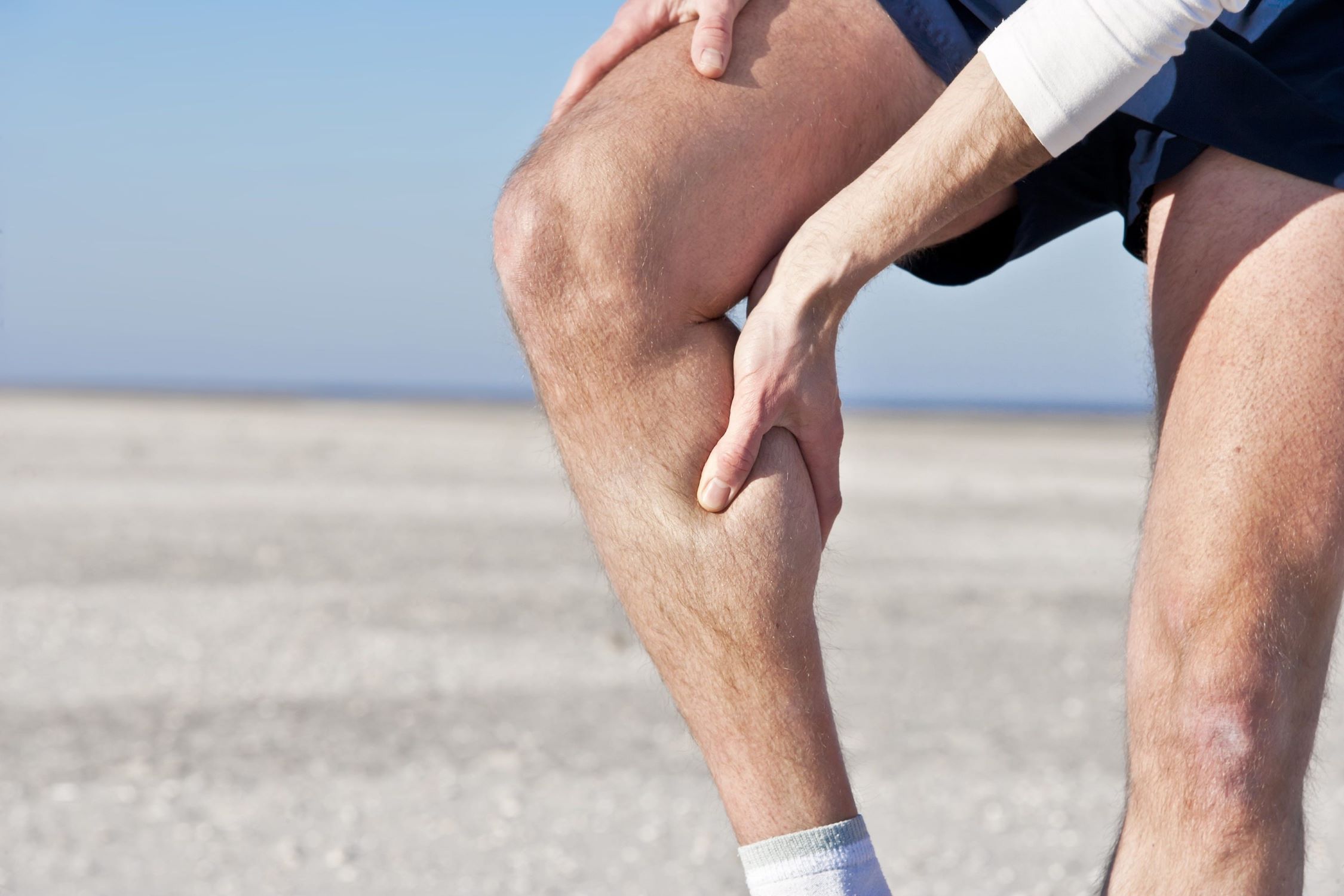Home>Health & Nutrition>Recovery>Recovering From A Twisted Knee: Understanding The Injury And Rehabilitation Methods
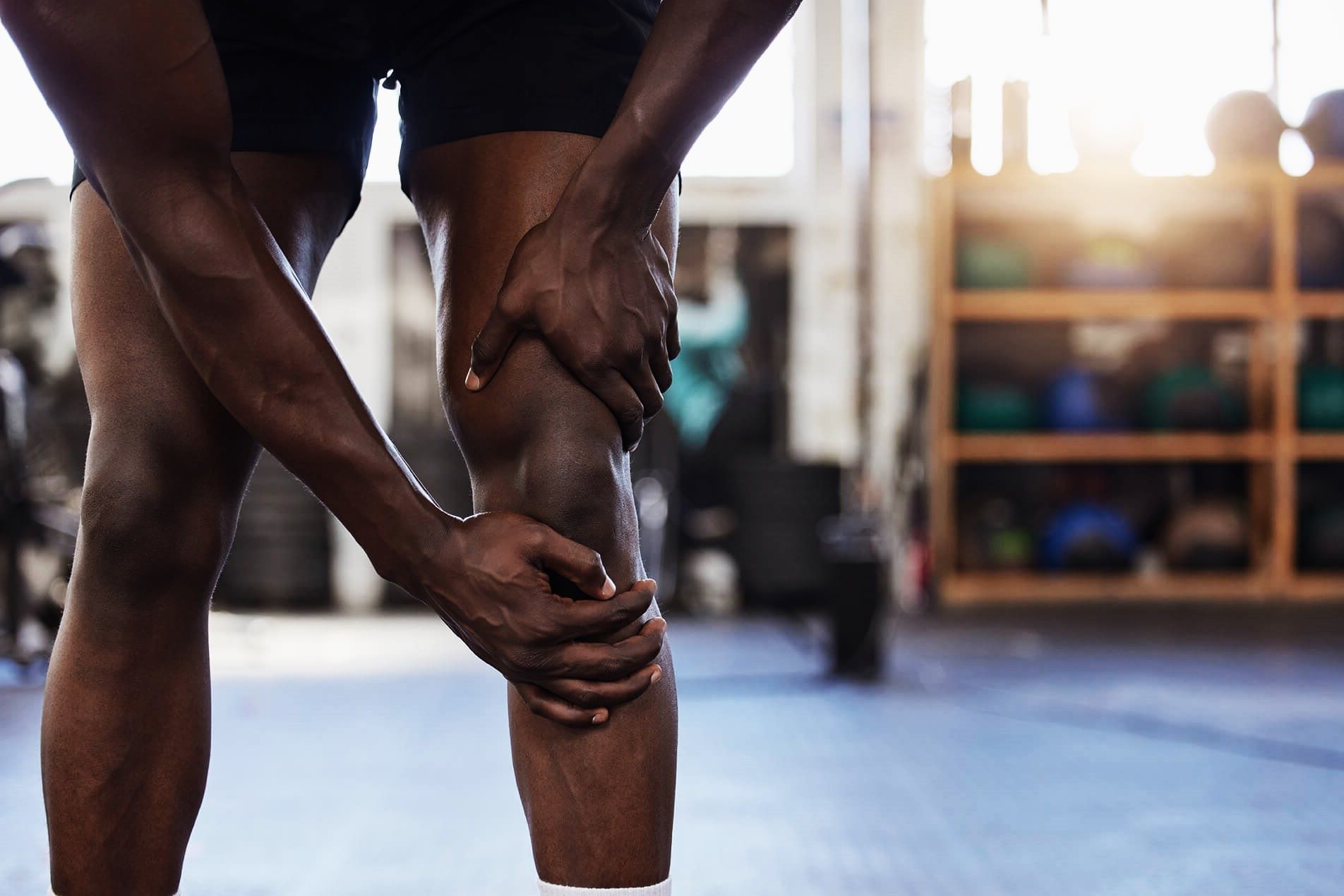

Recovery
Recovering From A Twisted Knee: Understanding The Injury And Rehabilitation Methods
Published: February 27, 2024
Learn about the recovery process for a twisted knee injury, including effective rehabilitation methods to help you heal and regain strength. Understanding the injury and how to recover.
(Many of the links in this article redirect to a specific reviewed product. Your purchase of these products through affiliate links helps to generate commission for Therunningadvisor.com, at no extra cost. Learn more)
Table of Contents
Understanding the Twisted Knee Injury
A twisted knee is a common injury that occurs when the knee is forced into an unnatural position, often resulting in damage to the ligaments, tendons, or cartilage. This type of injury can happen during physical activities such as sports, exercise, or even simple daily movements. Understanding the mechanisms and implications of a twisted knee injury is crucial for effective recovery and prevention.
When the knee twists beyond its normal range of motion, the ligaments that support the joint can become strained or torn. The most frequently affected ligaments in a twisted knee injury are the anterior cruciate ligament (ACL) and the medial collateral ligament (MCL). These ligaments play a vital role in stabilizing the knee joint, and their injury can lead to instability and pain.
In addition to ligament damage, a twisted knee can also result in meniscal tears. The meniscus is a rubbery, C-shaped cartilage that acts as a cushion between the shinbone and thighbone. When the knee twists forcefully, the meniscus can get pinched or torn, causing pain, swelling, and limited mobility.
Understanding the specific structures involved in a twisted knee injury is essential for accurate diagnosis and targeted treatment. By recognizing the signs and symptoms of this injury, individuals can seek timely medical attention and begin the recovery process effectively.
In the next sections, we will delve into the symptoms, diagnosis, treatment options, rehabilitation methods, and preventive measures for a twisted knee injury, providing comprehensive insights to aid in the journey toward recovery and long-term knee health.
Read more: 4 Common Causes Of Knee Pain After Running
Symptoms and Diagnosis
Symptoms of a twisted knee injury can vary depending on the severity of the trauma and the specific structures affected. Common indicators of a twisted knee include immediate pain, swelling, and difficulty bearing weight on the affected leg. Individuals may also experience a popping sensation at the time of injury, accompanied by instability or a feeling of the knee giving way.
Upon sustaining a twisted knee, it is crucial to pay attention to the following symptoms:
-
Pain: The onset of sharp or dull pain in the knee, particularly during movement or weight-bearing activities, is a primary symptom of a twisted knee injury. The intensity of the pain may vary based on the extent of the damage.
-
Swelling: Swelling around the knee joint is a typical response to injury and can indicate the presence of inflammation. The affected area may appear visibly swollen, and individuals might notice a sensation of tightness or pressure.
-
Limited Range of Motion: A twisted knee can lead to restricted movement, making it challenging to fully extend or bend the knee. This limitation in range of motion can significantly impact daily activities and physical function.
-
Instability: Instability in the knee joint, characterized by a feeling of the knee giving way or being unable to support the body's weight, is a common symptom of ligamentous injuries resulting from a twisted knee.
-
Popping Sensation: Some individuals report hearing or feeling a popping or snapping sensation at the time of the injury, which can be indicative of ligament or meniscal damage.
Diagnosing a twisted knee injury typically involves a comprehensive evaluation by a healthcare professional, often starting with a physical examination to assess the extent of swelling, tenderness, and range of motion. Additionally, imaging studies such as X-rays, MRI scans, or ultrasound may be utilized to visualize the internal structures of the knee and identify any ligament or meniscal damage.
Healthcare providers will also inquire about the circumstances surrounding the injury, including the specific movements or activities that led to the knee trauma. This information, combined with the physical examination and imaging findings, aids in formulating an accurate diagnosis and developing an appropriate treatment plan tailored to the individual's needs.
By recognizing the symptoms and seeking prompt medical evaluation, individuals can facilitate the diagnostic process and initiate timely interventions to promote effective recovery from a twisted knee injury.
Treatment Options for a Twisted Knee
Upon diagnosis of a twisted knee injury, the selection of treatment options is guided by the severity of the injury, the specific structures affected, and the individual's overall health and lifestyle. The primary goals of treatment for a twisted knee are to alleviate pain, reduce swelling, promote healing, and restore optimal function and stability to the joint. The following treatment modalities are commonly employed in managing a twisted knee injury:
-
R.I.C.E. Protocol: The R.I.C.E. protocol, which stands for rest, ice, compression, and elevation, is often recommended in the initial stages of a twisted knee injury. Resting the affected knee helps prevent further damage, while applying ice packs and compression aids in reducing swelling and inflammation. Elevating the leg also assists in minimizing swelling and promoting fluid drainage from the injured area.
-
Pain Management: Over-the-counter nonsteroidal anti-inflammatory drugs (NSAIDs) such as ibuprofen or naproxen may be prescribed to alleviate pain and reduce inflammation associated with a twisted knee injury. These medications can help individuals manage discomfort and engage in rehabilitative exercises more comfortably.
-
Immobilization: In cases of severe ligamentous injury, immobilizing the knee joint with a brace or splint may be necessary to prevent excessive movement and facilitate the healing process. Immobilization also helps reduce the risk of further trauma to the injured structures.
-
Physical Therapy: Engaging in a structured physical therapy program is a key component of rehabilitation for a twisted knee injury. Physical therapists design customized exercise regimens to improve strength, flexibility, and range of motion in the knee joint. These exercises aid in restoring function and stability while reducing the risk of future injuries.
-
Bracing and Supportive Devices: Depending on the nature of the injury, individuals may benefit from using supportive braces or orthotic devices to provide additional stability to the knee joint during daily activities or physical exercise. These supportive aids can help protect the knee and minimize the risk of re-injury.
-
Surgical Intervention: In cases of severe ligament tears or complex meniscal injuries, surgical intervention may be recommended to repair or reconstruct the damaged structures. Surgical procedures are tailored to the specific needs of the individual and are aimed at restoring stability and function to the knee joint.
-
Regenerative Medicine: Emerging treatment modalities such as platelet-rich plasma (PRP) therapy or stem cell injections are being explored for their potential in promoting tissue healing and regeneration in cases of ligament or meniscal damage. These regenerative approaches offer promising avenues for enhancing the natural healing process of a twisted knee injury.
By considering these treatment options in consultation with healthcare professionals, individuals can embark on a comprehensive recovery journey tailored to their unique injury profile and rehabilitation needs. Implementing a multifaceted approach to treatment, encompassing both conservative and advanced interventions, can significantly contribute to the successful recovery from a twisted knee injury and the restoration of optimal knee function.
Rehabilitation Methods for a Twisted Knee
Rehabilitation plays a pivotal role in the recovery process following a twisted knee injury. It encompasses a comprehensive approach aimed at restoring strength, flexibility, and functionality to the knee joint while minimizing the risk of future injuries. The implementation of tailored rehabilitation methods is essential in promoting optimal healing and facilitating a safe return to daily activities and physical pursuits. The following rehabilitation strategies are commonly employed in the management of a twisted knee injury:
1. Progressive Exercise Regimens:
Structured exercise programs designed by physical therapists form the cornerstone of knee rehabilitation. These regimens typically commence with gentle range-of-motion exercises to alleviate stiffness and gradually progress to encompass strengthening and stability exercises. Targeted exercises focus on enhancing the strength of the surrounding muscles, particularly the quadriceps, hamstrings, and calf muscles, to provide enhanced support to the knee joint.
Read more: Possible Causes Of Knee Pain While Cycling
2. Balance and Proprioception Training:
Improving balance and proprioception, which refers to the body's awareness of its position in space, is crucial in reestablishing stability and reducing the risk of recurrent knee injuries. Balance exercises, often incorporating unstable surfaces or specialized equipment, aid in enhancing proprioceptive feedback and promoting neuromuscular control of the knee joint.
3. Functional Movement Rehabilitation:
Rehabilitation programs emphasize the integration of functional movements that mimic daily activities and sports-specific motions. These activities aim to simulate real-life scenarios and enable individuals to regain confidence in performing routine tasks while ensuring proper biomechanics and joint alignment.
4. Flexibility and Range of Motion Exercises:
Incorporating stretching and flexibility exercises into the rehabilitation regimen is vital for maintaining or improving the range of motion in the knee joint. These exercises help prevent the development of stiffness and promote optimal joint mobility, contributing to enhanced functional capacity.
5. Gradual Return to Physical Activities:
As individuals progress through their rehabilitation journey, a gradual reintroduction to physical activities and sports is carefully orchestrated. This phased approach allows for the assessment of the knee's response to increased demands and facilitates the identification of any residual limitations or weaknesses that require targeted attention.
6. Patient Education and Self-Management:
Empowering individuals with knowledge about their injury, rehabilitation process, and preventive measures is integral to successful recovery. Educating patients about proper body mechanics, injury prevention strategies, and self-management techniques equips them with the tools to actively participate in their rehabilitation and maintain long-term knee health.
By integrating these rehabilitation methods into a comprehensive recovery plan, individuals can optimize their recovery from a twisted knee injury and regain confidence in the stability and functionality of their knee joint. The collaborative efforts of healthcare professionals, including physical therapists and orthopedic specialists, in guiding and supervising the rehabilitation process are instrumental in achieving favorable outcomes and promoting sustained knee wellness.
Preventing Future Knee Injuries
Preventing future knee injuries is paramount for maintaining long-term knee health and minimizing the risk of recurrent trauma. Implementing proactive measures and adopting healthy lifestyle practices can significantly reduce the likelihood of sustaining additional knee injuries. By prioritizing injury prevention, individuals can safeguard the integrity of their knee joints and sustain an active and fulfilling lifestyle. Here are essential strategies to prevent future knee injuries:
1. Strength and Flexibility Training:
Engaging in regular strength and flexibility training exercises is fundamental for fortifying the muscles surrounding the knee joint. Targeted exercises that focus on strengthening the quadriceps, hamstrings, and calf muscles contribute to enhanced joint stability and support. Additionally, incorporating flexibility exercises to maintain optimal range of motion in the knee joint can help reduce the risk of injuries during physical activities.
2. Proper Warm-Up and Cool-Down:
Prior to engaging in physical activities or sports, it is crucial to perform a thorough warm-up routine to prepare the muscles and joints for movement. Dynamic stretching and light aerobic exercises can help increase blood flow to the muscles and improve flexibility. Similarly, concluding physical activities with a cool-down session, including static stretching and gentle movements, aids in promoting muscle recovery and reducing post-exercise stiffness.
Read more: Running: Understanding Adductor Injuries
3. Correct Technique and Body Mechanics:
Adhering to proper technique and body mechanics during physical activities and sports is essential for preventing undue stress on the knee joint. Individuals should receive guidance from qualified instructors or coaches to ensure that they are employing correct movement patterns and postures. This is particularly important in high-impact activities such as running, jumping, and weightlifting.
4. Appropriate Footwear and Equipment:
Wearing appropriate footwear that provides adequate support and cushioning is vital for minimizing the impact on the knee joint during physical activities. Additionally, utilizing well-maintained sports equipment and protective gear, such as knee braces or padding, can help mitigate the risk of traumatic injuries, particularly during contact sports or activities with high injury potential.
5. Gradual Progression and Rest Periods:
When initiating new physical activities or exercise regimens, it is important to progress gradually to allow the body to adapt to increased demands. Incorporating rest periods into training schedules is crucial for facilitating muscle recovery and preventing overuse injuries. Balancing activity with adequate rest is key to sustaining long-term joint health.
6. Weight Management and Healthy Lifestyle:
Maintaining a healthy body weight through balanced nutrition and regular physical activity is instrumental in reducing the strain on the knee joint. Excess body weight can exacerbate the risk of knee injuries and contribute to the development of chronic conditions such as osteoarthritis. By adopting a healthy lifestyle, individuals can promote overall joint wellness and minimize the burden on their knees.
7. Regular Physical Assessments and Monitoring:
Periodic physical assessments and monitoring of joint health by healthcare professionals, such as orthopedic specialists or physical therapists, can aid in identifying potential risk factors and addressing any underlying issues that may predispose individuals to knee injuries. Proactive management of joint health through regular check-ups is essential for early intervention and preventive strategies.
By integrating these preventive measures into daily routines and physical activities, individuals can proactively safeguard their knee health and reduce the likelihood of future injuries. Prioritizing injury prevention not only fosters sustained joint wellness but also enables individuals to pursue an active and fulfilling lifestyle with confidence and resilience.

